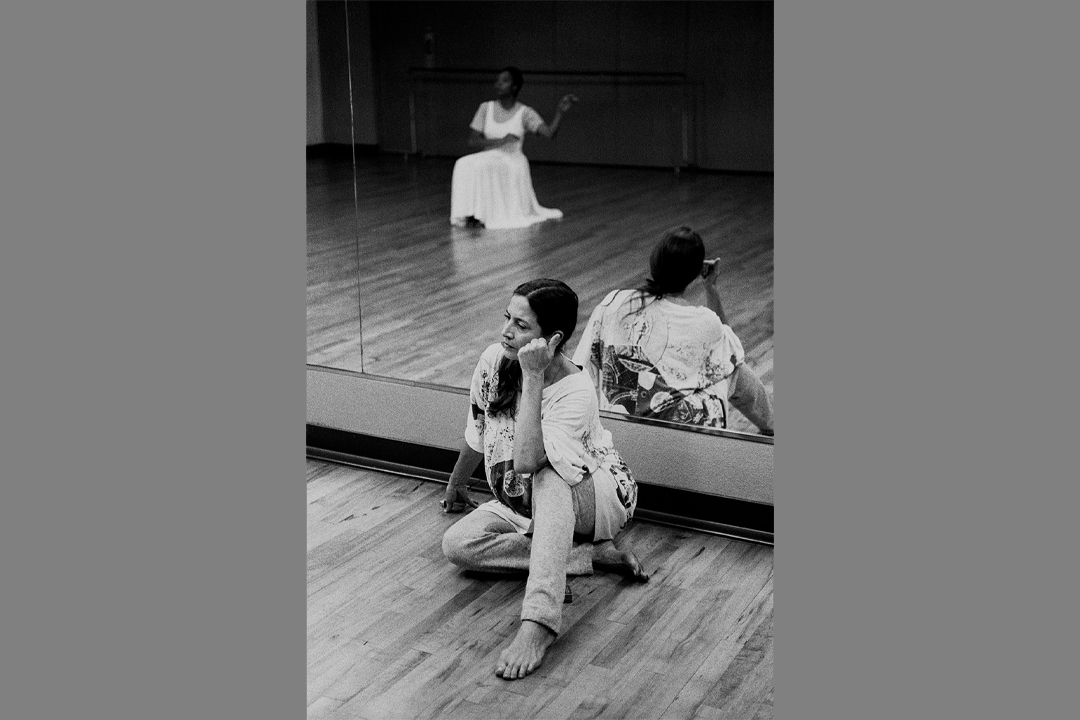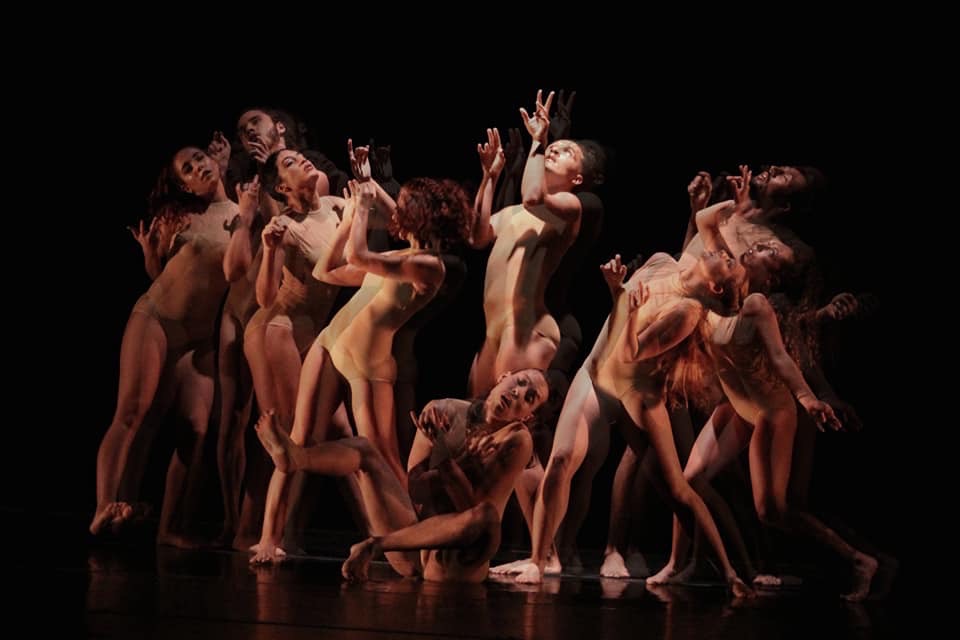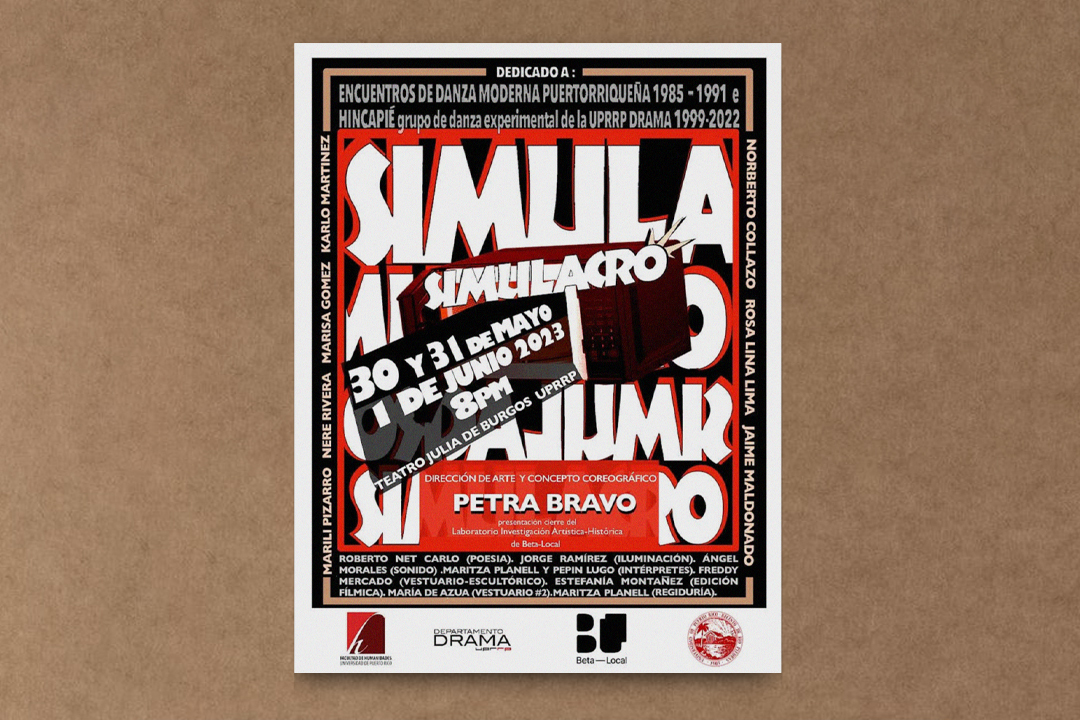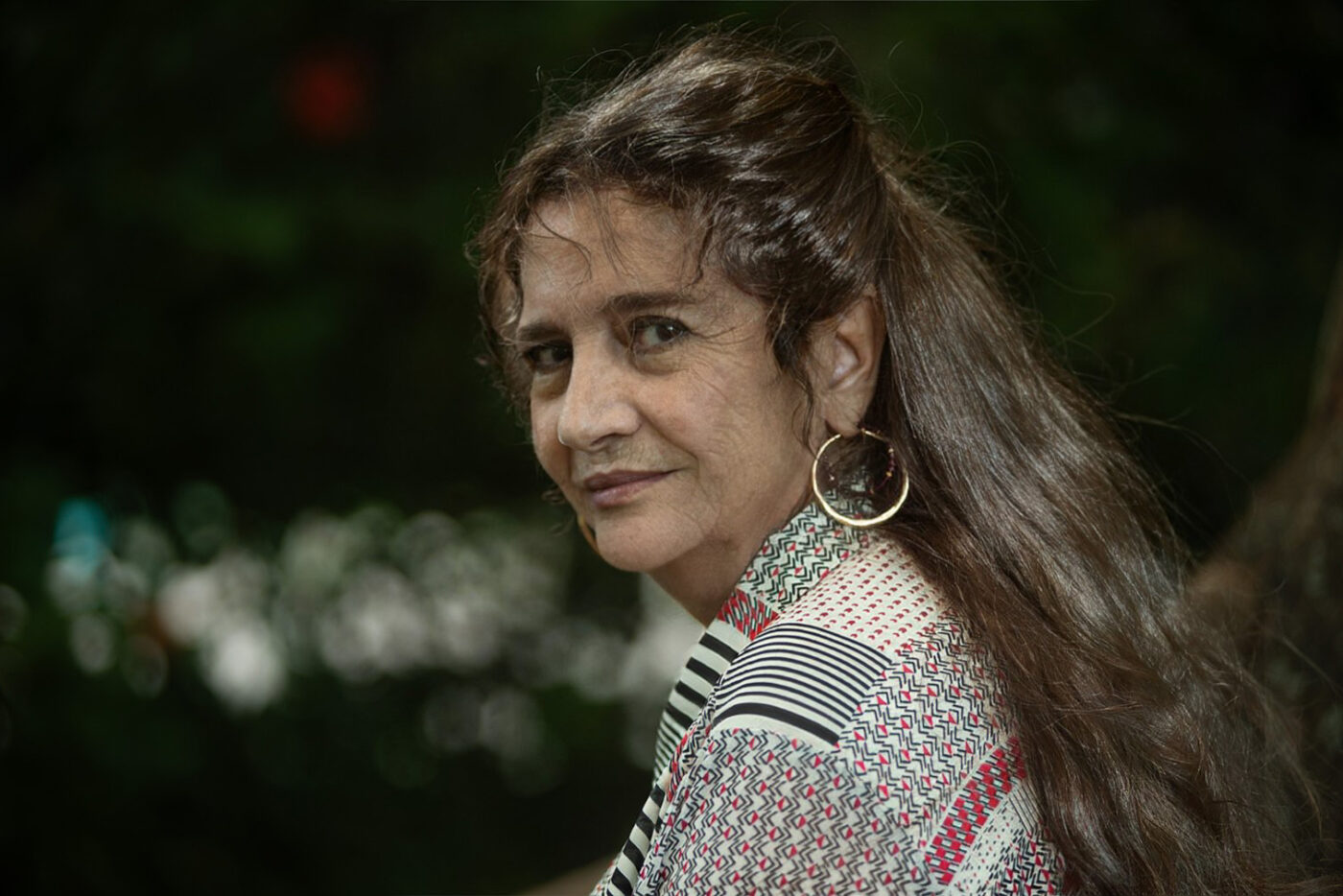On Dancing and Nurturing; the Emergent Nature of Movement in Communities
Lee esta entrevista en español.

[ID: A black-and-white photograph of Petra Bravo and dancer Dolores Pedro. Petra is sitting on the ground against the dance studio mirror, looking pensively at Dolores with her head resting on her knuckles. Dolores’s reflection in the mirror shows them kneeling in an all white dress.]
Choreographer and educator Petra Bravo has left a lasting mark on the Puerto Rican arts scene for over half a century, with a prolific career spanning continents and generations. Her more than one hundred works have graced stages from New York to Cuba, and her influence extends far beyond geographical borders. Rooted in a deep commitment to addressing societal inequality, Bravo’s choreography serves as a powerful vehicle for expression, collaboration, and resistance.
Beginning her journey as a dancer with the Ballet Nacional de Cuba under the direction of Alicia Alonso, Bravo’s artistic trajectory took her across the globe, performing in prestigious venues and honing her craft. In 1968, she embarked on a new chapter in Puerto Rico, alongside her husband Otto Bravo, where they founded dance companies such as Ballet 70 and Ballet Teatral. Throughout her career, Bravo has co-founded experimental collectives like Pisotón, and spearheaded festivals that have reshaped the dance landscape in Puerto Rico. Her dedication to nurturing emerging talent is evident in initiatives like Danza Brava and Hincapié, a student company she founded in 1999, which continues to serve as a springboard for interdisciplinary artists. In her most recent work, SIMULACRO, Bravo collaborated with poets and artists to create a multidimensional exploration of sound, movement, and spoken word. This interdisciplinary approach reflects Bravo’s belief in the transformative power of collaboration and experimentation.
As Bravo reflects on her illustrious career, she remains steadfast in her commitment to pushing boundaries, challenging norms, and amplifying marginalized voices through the medium of dance. With each new endeavor, she continues to defy expectations and teach generations of artists to come.
Interview with Petra Bravo
Luz Orozco: You’ve been a part of many collectives and initiatives that promote contemporary and experimental dance, such as Pisotón and Hincapie. How would you describe your focus in the vision and collaboration within the dance community on the island?
Petra Bravo: My approach to dance education in its specific stages and moments encompasses particular levels of understanding and development of the work. There are two basic aspects, the first is to work with students with no previous knowledge of dance, where it is necessary to explain and work with their bodies with time and constancy. The second stage is directed towards dancers who already have experience and specific techniques such as jazz, classical ballet, among other modalities; then, based on that knowledge, we work with rigor.
In addition to teaching other techniques, we discuss ways of interpreting the body, offering examples of improvisation, and an approach to other artistic disciplines; for example, exploring poetry and creating one’s own texts to explore other forms of dance and ways of staging. These experiences are long-term and have been successfully developed in the dance and university theater environment. Private academies have included modern dance as a basic necessity and in dance communities this style has been successfully and well-received.

[ID: Nine dancers in beige leotards take various poses next to each other. Against the black background, the traces of the dancers’ movements are captured as faint silhouettes.]
Luz: In SIMULACRO, you collaborated with various artists and poets. What pulls you to work with poets, language, and spoken word, and what is your process in developing choreography with those collaborators?
Petra: In SIMULACRO, I was radical in the staging. The opening for the audience was conducted with a recording of the sound poetry, which is based on the sounds of words creating an introspective atmosphere of sound and inner reflection.
It is very interesting the way words are carried into the body of the dancer because the essence of the context is explored and the gestures are played out within the choreography, occupying a different significant rhythm. I am in favor of looking for dancers who can commit themselves to a different way of dancing.
Poetry forces me to appreciate the beauty of the unexpected. I choose the poems, work on their diction, and look for ways to experiment with the voice, because there are sound poems that are interpreted very differently. Sometimes a verse is prolonged in the body or a word is held that seems like a musical note; this inspires me and challenges me to choreograph in another way.
In the rehearsal workshops, we worked on the possibilities of assembling and disassembling using this reference and executing it in the performance, speaking or saying loose phrases related to the context, without being a coherent conversation of its own, only a relation or an insinuation to the body of the poem.
It is very interesting the way words are carried into the body of the dancer because the essence of the context is explored and the gestures are played out within the choreography, occupying a different significant rhythm.
I invited only one poet, Roberto Net Carlo, to cover the different modalities of his poetry. Roberto is an exceptional poet, versed and experimental, an artist who searches for his roots by dismembering the art of the word. SIMULACRO established the need to think backwards from what is established, to follow a line of thought without embellishments, respecting the emotional in stage productions, and to remove our predetermined ideas. This piece is a radical change in what is possible, taking into account the limitations of all kinds, which are what led us to a very diverse creation.
I incorporated video art, a nude solo, where the same dancer of the video was performing live in an interpretation of dance and dialogue between them, with a short text. It was interesting to see them in that exchange of text and movements, [because] they answered each other with the use of the voice in both choreographies, the video, and the live scene. With that piece I closed SIMULACRO.

[ID: A black, white, and red poster promoting SIMULACRO is on a brown background. The original text is in Spanish. The English translation reads: “Dedicated to moments of modern Puerto Rican dance 1985-1991 and Hincapié experimental dance group of the UPRRP Drama 1999-2022. SIMULACRO 30 and 31st of May to June 1st 2023 8 pm, Julia de Burgos UPRRP Theater. Art Direction and Choreography Concepts, Petra Bravo.”]
Luz: Can you speak more about your collaboration with Roberto Net Carlo and your hopes to publish a book with him?
Petra: This dream is one of those important desires in my career, making a book of poetry and choreographic designs together with the passionate writer and poet Roberto Net Carlo. I hope that this book will be made with links to my choreographies so that they can be seen on YouTube, in connection with the assembly of at least seven pieces of poetry in the book. [Roberto] shaped my thinking for my experimental dance productions in other ways, encouraged me in my attempts at texts and poems, and mentored me in discovering my second outlet.
Poetry along with dance means to disperse, to disintegrate, to reaffirm, to convulse, to write in codes, and to interpret with one’s own sense. The dance public values and recognizes these artistic approaches. My dance is direct in themes and sub-themes in the varied interpretations of the live dancers. I emphasize my artistic stance on social issues; I do not neglect or leave it to chance. We become and transform ourselves into animals of dance poetry.
Poetry along with dance means to disperse, to disintegrate, to reaffirm, to convulse, to write in codes, and to interpret with one’s own sense.

[ID: An older woman with long brown loose hair smiles softly at the camera. She is wearing a patterned blouse and hoop earrings.]
Luz: In your career that spans over fifty years, tell us about your evolution as a choreographer and how your methods of teaching as a teacher and mentor have changed.
Petra: The experiences of dancing, choreographing, and teaching are similar and very different subjects, but they overlap each other. The approach of expanding bodies to the smallest detail is teaching. The methods being used vary with different bodies. You always have to modify using other ways, mixing techniques to perpetuate the muscle work and loosening to use it differently depending on the assimilation of the professional dancer or the student. Knowing about ballet and modern dance schools is extremely helpful for such committed work. And your intuition is everything, you have to listen to it.
Choreography is a disorder of sensations: aerial compositions, patterns of space, a liberation of all that has been learned, and to compose it to the necessary taste. To use music within its measures is to have knowledge of the technique used to dance and to achieve nuances within the musical score. I also make choreographies for silence and noise. Nothing limits me or us.
I also make choreographies for silence and noise. Nothing limits me or us.
Dancing is the most delicious thing that exists. After dancing and in each rise to the scene, is to know yourself better, to move the passion in every muscle is a delight, and to distribute the emotions. It is a full complement of life and art that is achieved by dancing. From the classics to the experimental to the rumba, to be able to denounce and say what needs to be said in a world as toxic as the control for the destructive donkey that is capitalism.
Dancing is a freedom of social commitment. To be able to somehow change the sense of living so individualized, enclosed in a disengaged, abusive elite, and to definitely be more collective. To reject the wars, such as the genocide in Palestine, to the street cries of dance and poetry.

